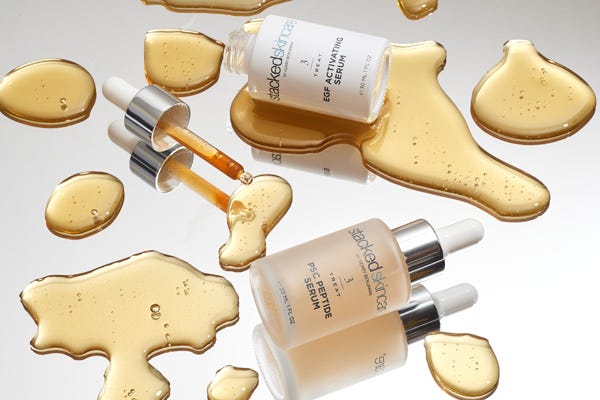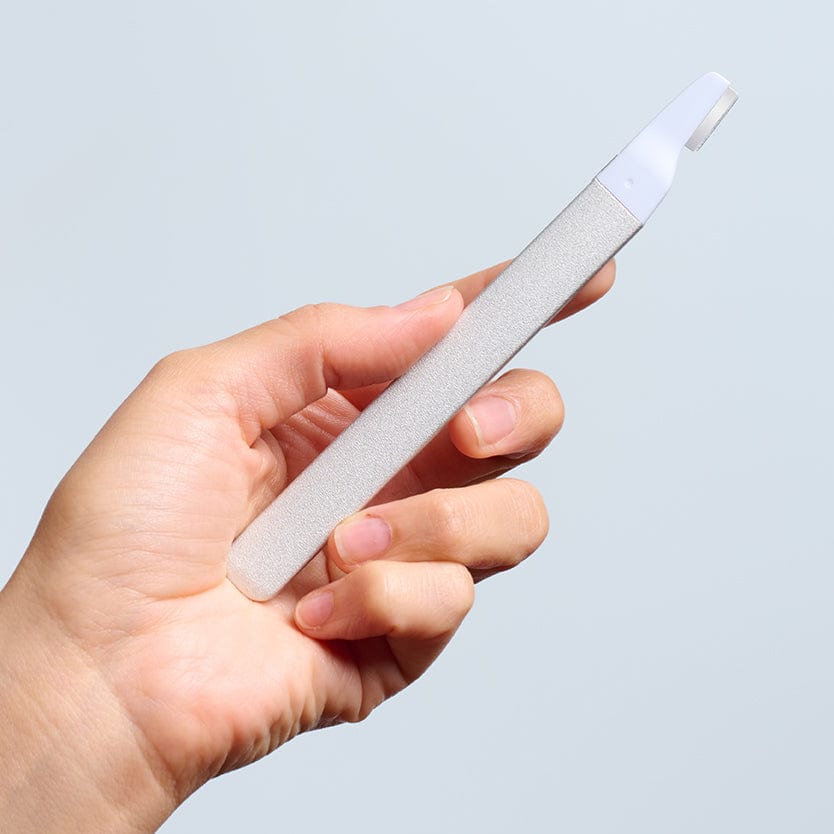Read An Ingredients Label Like A Pro
Written by Kerry Benjamin

Understanding the ingredients in your skincare products is the first step in making the best decisions for your skin, but deciphering an ingredients label can sometimes feel like an unsolvable puzzle. It doesn’t have to be this way—below is a guide to help you make educated choices for your healthiest skin.
ORDER OF INGREDIENTS/CONCENTRATION LEVELS
When reading a cosmetics label, the ingredients will be listed in descending order of their concentrations starting with the largest amount in a product—usually, the first five ingredients make up the majority of the formula, descending down to ingredients with the least concentration. Ingredients that make up less than 1% of a formula are listed at the bottom in any order.
Although you might think that active ingredients should be high on the list, that’s not always the case. Certain active ingredients like peptides work best when they are included at low levels.
PRODUCT SHELF LIFE/EXPIRATION DATE
Many products have an open jar symbol somewhere on the product that tells you how long yourproduct is good for after opening—6M, 12M or 24M represent time in months. If you can’t spot a symbol, there is usually an expiration date attached to the batch number, which is at the bottom of your bottle.
DECIPHERINGYOUR INGREDIENTS
NATURAL INGREDIENTS
Natural ingredients are usually listed in their latin plant names, often with their common name in parentheses. These usually come in the form of essential oils or extracts—essential oils are the pure, concentrated version of the plant oils while an extract is often diluted or a water-based extract like juice. Not every plant can produce useable essential oils and many essential oils are too strong to be used onthe skin.
WATER-BASED VS. OIL-BASED FORMULAS
If an ingredient list starts with water or aloe juice, the product is water-based. If it starts with an oil ingredient like coconut oil or jojoba oil, it's oil-based. Water-based formulas need stronger preservative systems because otherwise they are susceptible to growing bacteria and mold.
PRESERVATIVES
Typically, preservatives make up the smallest percentage of the total formula. The most common cleaner preservatives are phenoxyethanol and ethylhexyl glycerin; vitamin E is also a great natural preservative. Avoid formulas that us parabens as preservatives—some studies have shown that they are carcinogens, and can cause hormone disruption and allergic reactions. More on them below.
SILICONES
Silicones are used to improve the feel and texture of a product and usually end in-coneor-siloxane. Some common silicones are dimethicone, trimethicone, cyclopentasiloxanem, and cyclohexasiloxane.
EMULSIFIERS
Emulsifiers (many have-ethsuffixes) work to prevent your product from separating in the bottle so you get active ingredients with every pump. If you have sensitive skin, it’s best to avoid synthetic emulsifiers like polysorbates, laureth-4, potassium cetyl sulfate. Instead, opt for natural emulsifiers like beeswax, palm oil and rapeseed oil.
WHAT TO AVOID
WATCH OUT FOR CLAIMS
There are currently no FDA regulations around terms like hypoallergenic, noncomedogenic, oil-free, clinically proven, and dermatologist-tested.These terms are often deceptive so look to the ingredients label for information instead.
FRAGRANCE
There is currently little FDA regulation on fragrance and the words parfumor fragrance can refer to many natural and chemical ingredients. If you're sensitive to synthetic fragrance, it is best to avoid scented products or products that don't list their scent ingredients as essential oils since they can be irritating and cause an allergic reaction or inflammation. Sometimes aroma and flavor are also fragrance.
PARABENS
These are preservatives that some studies say can cause cancer, hormone disruption and allergic reactions. Common parabens include methylparaben, ethylparaben, propylparaben and butylparaben.
SULFATES
Sulfates are sulfur-containing mineral salts often used in foaming cleansers that can strip your skin of its oils, causing dryness and irritation. The most common sulfates aresodium lauryl sulfate (SLS) and sodium laureth sulfate (SLES).
PHTHALATES
These chemicals are often additions to fragrances and have been shownto cause toxicity and birth defects. Sometimes these are not labeled in the ingredients list so look for brands or packaging that claim phthalate-free.
FORMALDEHYDE RELEASERS
Certain preservatives can trigger the release off formaldehyde, which has been linked to cancer. The FDA doesn’t regulate how many formaldehyde-releasing chemicals can be included in a product so check the label. Common releasers include DMDM hydantoin, imidazolidinyl urea, diazolidinyl urea, quaternium-15, bronopol, 5-Bromo-5-nitro-1,3-dioxane and hydroxymethylglycinate.
WHAT TO LOOK FOR
HYALURONIC ACID
A clean hydrating acid naturally produced in the body that helps the skin retain moisture. Listed as sodium hyaluronate (the salt form), hydrolyzed hyaluronicacid, and sodium acetylated hyaluronate. Our HA HYDRATING SERUM is also formulated with lactic acid to brighten skin while hydrating and plumping away fine lines.
PEPTIDES
Short chain amino acids that stimulate collagen production to reduce finelines and plump the skin. Common peptides include palmitoyl pentapeptide (akaMatrixyl) and Rh-Oligopeptide-1. Natural plant stem cells that boost cellular turnover, resulting in firmer, younger looking skin.
NATURAL BOTANICALS
Look for extracts and oils derived from plants, flowers, herbs, nuts, seeds and berries. Our Shiunko Blush Face Oil has botanicals used in Traditional Chinese Medicine, fermented shiunko oil with Japanese indigo and field mustard oil to decrease the look of skin irritation and redness with calming nutrients.
EPIDERMAL GROWTH FACTORS
Clean proteins that activate the skin’s natural healing response, promoting even, smooth skin. Our EGF ACTIVATING SERUM uses vegan proteins to brighten age spots and help blemishes heal faster.
VITAMIN C
A natural antioxidant that brightens and anti-ages skin. Look for ascorbic acid (the purest form), sodium ascorbyl phosphate, ascorbyl palmitate, retinyl ascorbate, tetrahexyldecyl ascorbate, magnesium ascorbyl phosphate, andascorbyl glucoside.
The best rule of thumb is: when in doubt, look it up! There are certain ingredients that look scarier than they actually are and others that you definitely will want to avoid. A great place to look is the EWG Skin Deep Database, which provides everything you need to know about any ingredient. Another tip: do your research and choose brands that align with your values and ideals—they’ll make products you can reach for without the research.
About the Author

Kerry Benjamin, a licensed aesthetician, has over 14 years of experience. Kerry is the driving force behind StackedSkincare. As the company's CEO, Kerry has dedicated her career to revolutionizing skincare. Her innovative approach combines peels, serums, and specialized tools to effectively address a wide range of skin concerns. CA LE license number Z98459.

